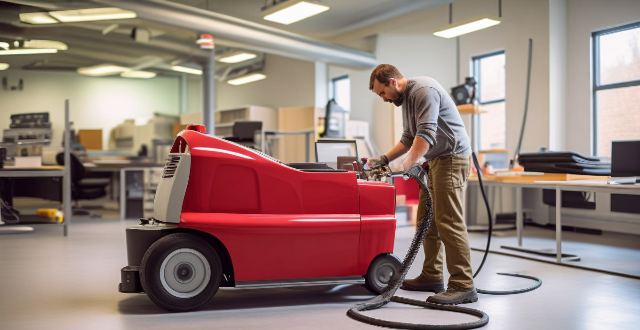Maintaining an Internal Rotor Motor for Longevity involves regular cleaning, inspection, lubrication, and checks on critical components. Proper care can extend the motor's lifespan and prevent costly repairs. Cleaning includes removing dust and debris with a soft cloth and compressed air. Deep cleaning is recommended when there are signs of overheating or reduced performance. Inspections should check for visible damage, wear, insulation resistance, and tight connections. Lubricating moving parts and changing lubricants as needed is essential. Bearings should be checked for wear and replaced if necessary, while cooling systems should be inspected for blockages or leaks. Seal integrity should also be verified. Performance testing and preventive replacement of worn parts can save time and money in the long run. Environmental considerations such as keeping the motor in a clean, dry, and temperate environment should also be taken into account. By following these steps, optimal performance and longevity of the internal rotor motor can be ensured.

Maintaining an Internal Rotor Motor for Longevity
Overview
To ensure the longevity of your internal rotor motor, it is essential to follow a regular maintenance schedule that includes cleaning, inspection, lubrication, and periodic checks on critical components. Proper care can significantly extend the lifespan of your motor and prevent unexpected downtime or costly repairs.
Cleaning
Regular Cleaning Schedule
- Clean the motor casing and vents with a soft cloth to remove dust.
- Use compressed air to clear away debris from hard-to-reach areas.
Deep Cleaning
- Disassemble parts (if possible) for a deeper clean when the motor shows signs of overheating or reduced performance.
- Use appropriate cleaning agents that are safe for the motor materials.
Inspection
Visual Inspection
- Check for any visible damage to the casing, wires, or other components.
- Look for signs of wear or damage on the rotor and stator.
Electrical Inspection
- Test the insulation resistance to ensure there are no shorts or ground issues.
- Verify that all connections are tight and free from corrosion.
Lubrication
Lubricating Moving Parts
- Apply lubricant to bearings according to the manufacturer's specifications.
- Ensure proper grease levels in gearboxes if applicable.
Changing Lubricants
- Change lubricants as recommended by the manufacturer or when they show signs of deterioration.
- Avoid mixing different types of lubricants.
Component Checks
Bearings
- Check for bearing wear and replace them if there is excessive play or noise.
- Ensure proper alignment to avoid premature failure.
Cooling System
- If your motor has a cooling system, check it regularly for blockages or leaks.
- Clean cooling fins and ensure fans are working efficiently.
Seal Integrity
- Inspect seals to ensure there are no leaks which could lead to contamination or lubricant loss.
Periodic Testing
Performance Testing
- Conduct performance tests periodically to establish a baseline and monitor for changes indicating potential issues.
- Use vibration analysis to detect imbalances or alignment problems early.
Preventive Replacement
- Replace worn parts before they fail completely; this proactive approach saves time and money in the long run.
Environmental Considerations
Ambient Conditions
- Keep the motor in a clean, dry, and temperate environment to prevent rust or other environmental damage.
- Avoid exposing the motor to excessive moisture or temperatures outside its operating range.
Conclusion
By following these comprehensive maintenance steps, you will not only extend the life of your internal rotor motor but also ensure optimal performance. Regular care and attention can mitigate unexpected repair costs and keep your equipment running smoothly for years to come. Remember, prevention is always better than cure!